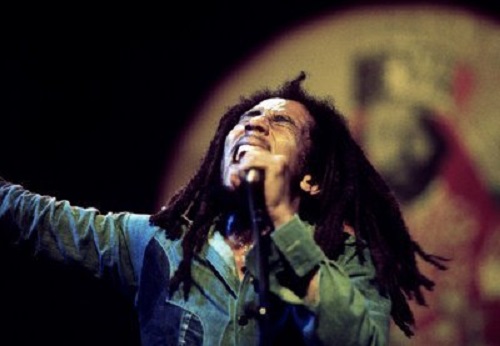Earlier this month, Caribbean National Weekly examined “Evolution of Jamaican Music: From Revivalism to Reggae.” Part I focused on “Revivalism, Mento, Ska.” Here are excerpts; see full article at Caribbean National Weekly. [Many thanks to Peter Jordens.]
Jamaica is traditionally described as the “land of wood and water,” but that description would be more accurate, as the “the land of wood, water and music.” Music, and dance, have been a part of Jamaica’s history dating back to slavery—serving as expressions of faith, hope, resistance, love, romance, and national pride. Over the years, Jamaican music has evolved from its traditional roots that included gospel, pocomania, quadrill, dinki mini, and Zion revival music. Influenced by the African culture from which enslaved people in Jamaica originated, the music throughout the early years featured heavy use of drums, and wind instruments like bamboo flutes.
As the slaves grew emboldened to seek emancipation from the British colonial masters, and influenced by visiting Christian evangelists, Revivalism grew into not just an appeal to a higher power, but into a movement characterized by passionate, pulsating revival music and dance.
The Revival ritual involves singing, drumming, dancing, hand-clapping, foot-stomping, and groaning along with the use of prayers to invite spiritual possession. It also includes music and songs from orthodox religion. Revivalism still exists in Jamaica, found chiefly in the parishes of Kingston, St. Andrew, St. Catherine, St. Elizabeth and St. Ann.
Rhythms of Mento
Mento music placed a strong emphasis on a rhythm created by the combination of drums, banjo guitars, flutes, and horns. Mento is described as having a “performance mode with a rhythmic impulse, with a response type of singing that is African in origin, while the scale patterns, harmonic concepts, and verse and chorus song types are British.” But, when performed, it was quintessentially Jamaican.
Mento is regarded in some circles as the Jamaican equivalent to calypso. While some of the songs were aired regularly, others were banned as they were thought to be too sexually explicit. Mento was first recorded by artistes such as Lord Flea and Lord Fly and ‘Sugar Belly’ Walker. In the 1960s and early 70s, one of Jamaica’s more popular dance bands, Carlos Malcolm and the Troubadours, featured mento heavily in its repertoire. Among the band’s greatest hits was ‘Rukumbine’ a distinctively mento song with sexual overtones. [. . .]
In the late 1950s, more young Jamaicans emerged as singers and musicians and began recording their music. Around this time a young politician of Lebanese descent, Edward Seaga, who developed a keen interest in Jamaican music and artists, established a modern recording studio that released early recordings of ‘blues’ artists like Higgs and Wilson and the Blues Busters, and a new, extremely popular band, Byron Lee and the Dragonaires. In 1962, Seaga sold the company to Byron Lee, who renamed it Dynamic Sounds which would grow in influence to the development of Jamaican music to be regarded as Jamaica’s Motown.
The explosion of singers, musicians and recording studios in Jamaica in the late 50s produced a new Jamaican musical genre – Ska.
The birth of Ska
Ska, a combined musical element of mento and calypso with some infusion of American jazz and rhythm and blues, featuring a strong bass line with upbeat rhythms from guitar, saxophone and even the piano, or keyboard.
In the early 1960s ska was insanely popular and was the dominant music genre for Jamaicans of all classes. The music was definitely made for dancing. Bands like Byron Lee and the Dragonaires, and the Skatalities, pulled large crowds wherever they played. One of the more popular clubs to dance the ska was the Glass Bucket Club on Half-Way-Tree Road in St. Andrew, where Jamaicans, including many overseas visitors, came to dance the ska; bending low, swinging their arms upwards and downwards, side by side, backwards and forward, while lifting their legs bent at the knees alternatively to the beat.
Traditional ska bands like the Skatalites featured bass, drums, guitars, keyboards, horns with sax, trombone and trumpet being most common. Individual members of the Skatalites like Don Drummond on trombone, and Jackie Mittoo on keyboards stood out as outstanding ska artists. [. . .]
Without a doubt, ska set a musical standard for genres that followed it such as rocksteady, reggae and dancehall. With ska, Jamaican music secured its niche, replacing American rock and roll and R&B as the main attraction at Jamaican clubs and house parties.
For full article, see https://www.caribbeannationalweekly.com/caribbean-breaking-news-featured/from-revivalism-to-reggae-the-evolution-of-jamaican-music-and-dance


One thought on “The Evolution of Jamaican Music: From Revivalism to Reggae (Part I)”